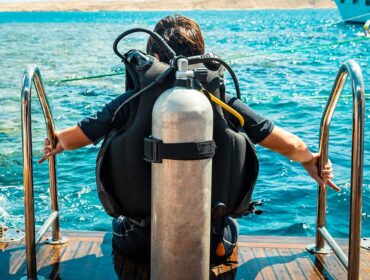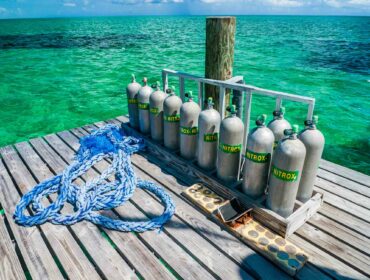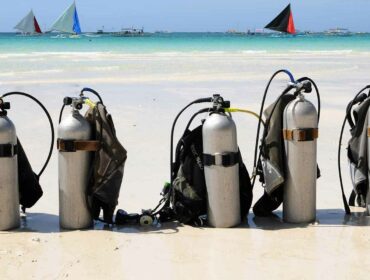There is no argument that SCUBA equipment should be serviced regularly, to make sure there are no flaws in the materials that could put a diver in danger. You should always keep your gear in the best condition possible to ensure its longevity, but there are services that a trained professional needs to perform, and inspecting your air tanks is one of them. An inspector is trained to carefully — you guessed it — inspect your dive cylinders for flaws that render them either usable, or useless. There are two main inspections performed; one required by law, and one upheld only by the dive industry itself.
Visual Cylinder Inspection
A visual cylinder inspection (VCI), or tank inspection, is performed annually by a dive shop technician to find any flaws on the surface of the cylinder, as well as the interior and the valve thread. There tests performed to discover bulges, dents, and measure scratch depths on the exterior; if any flaw is determined to be capable of compromising the diver’s safety, the cylinder is condemned, and marked as such.
The internal inspection will be looking out for any signs of pitting or corrosion. If pitting is found, it will be measured to decide whether it renders the tank unusable. If corrosion is found, the technician puts the tank into a process called “tumbling”, wherein an abrasive material is inserted into the cylinder, and then spun around for a length of time until the corrosion has been removed.
The valve thread will be inspected for corrosion, cracks, or loss of metal. Since the valve is what controls your airflow from the cylinder to your lungs, you would do well to keep the thread clean and properly maintenanced between dives. This annual inspection is not required by law, but it is considered to be an industry standard. Most dive shops will not perform air fills without a sticker that displays that your inspection is current.
Tomorrow’s article will discuss the inspection that is required by law: hydrostatic tank testing.




